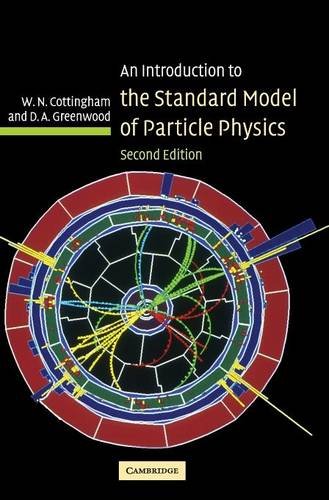An Introduction to the Standard Model of Particle Physics epub
Par hellwig marvin le dimanche, août 7 2016, 23:12 - Lien permanent
An Introduction to the Standard Model of Particle Physics by D. A. Greenwood, W. N. Cottingham


Download eBook
An Introduction to the Standard Model of Particle Physics D. A. Greenwood, W. N. Cottingham ebook
Publisher: Cambridge University Press
Page: 294
ISBN: 0521852498, 9780521852494
Format: pdf
Here A, C and D are heavy new-physics particles and j stands for a quark jet. An Introduction to the Standard Model of Particle Physics Pages: The new edition of this introductory graduate textbook provides a concise but accessible introduction to the Standard Model. For example, decades of theoretical and experimental studies used the dilepton decay distributions as crucial instruments (Drell-Yan and quarkonium production, Standard-Model couplings of vector bosons), but only recently some general characteristics of the angular distribution have been This seminar illustrates the basic notions of quantum mechanics that determine the shape of the decay angular distributions studied in high-energy particle physics. Read more about the Higgs boson and why its existence is important in particle physics. Among those 12 particles, you'll encounter six quarks and six leptons. Modern theory called the standard model, attempts to explain the theory concerning the electromagnetic, weak, and strong nuclear interactions, which mediate the dynamics of the known subatomic particles. What exactly is the Higgs boson? 1.1 INTRODUCTION Modern particle physics research is based on subatomic particles, including atomic constituents such as electrons, protons, and However, as physicists' knowledge has improved which particles are regarded as fundamental has changed with time. So the introduction of this symmetry is very important. The first section gave a brief introduction to the standard model of particle physics. To start, we were introduced to the Standard Model of physics, a theory which identifies the set of forces (except gravity) and particles which are believed to make up the whole of the universe (with some yet to be discovered). The first few chapters give an introduction to higher dimensions, looking at what they mean and how all but three of the dimensions of space might be curled up so as to be undetectable. Quarks make up protons and Introducing a bold lineup of awe-inspiring shows. Here's the gist of the standard model, which was developed in the early 1970s: Our entire universe is made of 12 different matter particles and four forces [source: European Organization for Nuclear Research]. She then moves on to the standard model, which unifies the electromagnetic, weak and strong forces, explaining how particle physics can be explained in terms of quarks and leptons interacting via forces mediated by photons, gauge bosons and gluons. The Standard Model of particle physics is described by its symmetries — or the symmetry group (SU(2)xU(1)) under which matter contents transform.